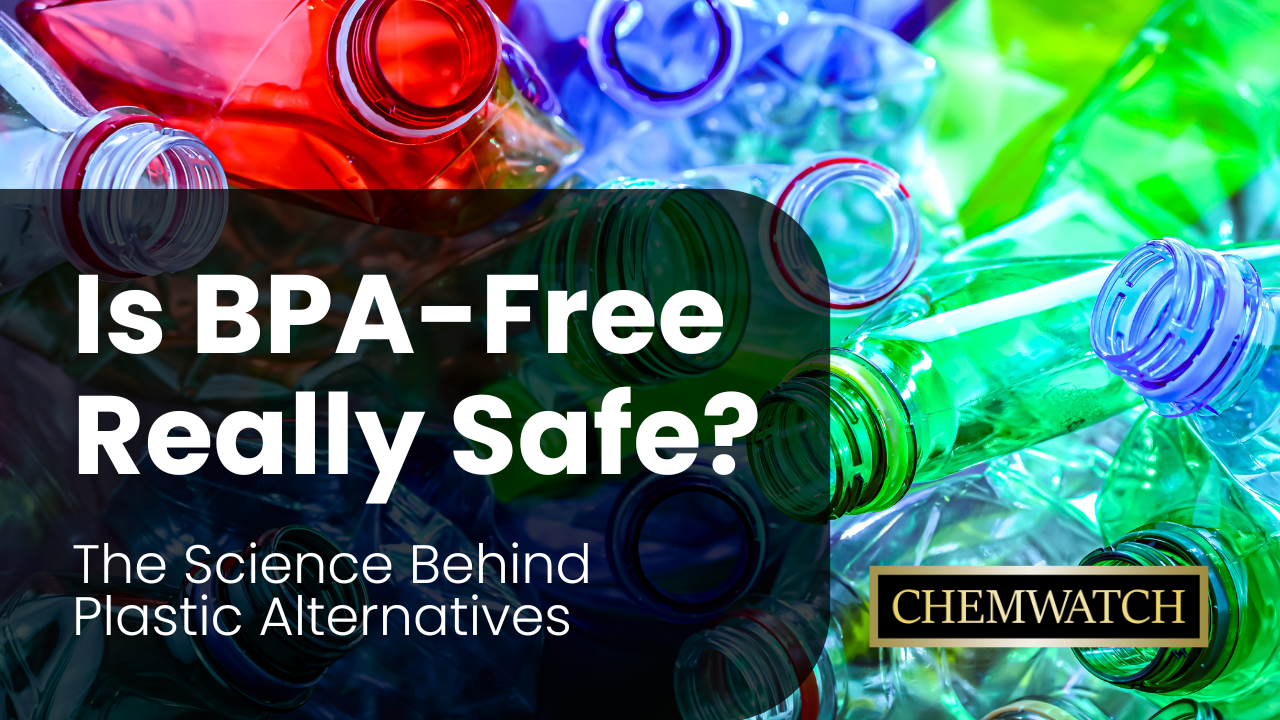
At this point, most of us have heard about Bisphenol A (BPA). For decades, BPA has been viewed as a chemical villain, largely due to its presence in plastics and the potential health effects associated with plastic chemical exposure. These health concerns spurred a widespread shift toward "BPA-free" safety-labelled products—but are these plastic alternatives genuinely safer, or have we simply traded one set of risks for another? Let’s explore the health risks of BPA alternatives, plastic chemical exposure, and endocrine disruptors in consumer products.

BPA is an industrial chemical used extensively in the production of polycarbonate plastics and epoxy resins. These materials are commonly found in food and beverage containers, thermal receipts, dental sealants, and water bottles—raising significant plastic health concerns due to their ubiquity.
Interesting Fact: BPA was first synthesised in 1891 and initially investigated as a synthetic estrogen before its use in manufacturing plastics began in the 1940s. This early hormonal relevance underpins its modern classification as an endocrine-disrupting chemical.
BPA mimics estrogen in the body, disrupting hormonal balance even at low exposure levels. These hormone-mimicking chemicals can affect reproductive health, foetal brain development, and are associated with metabolic disruption, including risks of obesity and type 2 diabetes. BPA interacts with hormone receptors and cellular signalling pathways, contributing to toxicology concerns in both humans and wildlife.
In response to consumer and regulatory pressure, manufacturers introduced BPA alternatives like Bisphenol S (BPS) and Bisphenol F (BPF). Marketed under the appealing "BPA-free" label, these substitutes promised safer plastic containers—but emerging science tells a more complicated story.
Recent toxicological studies suggest that BPS and BPF share similar, and sometimes more potent, endocrine-disrupting properties. Like BPA, they leach into food and water, enter human systems, and raise similar plastic health concerns.
Evidence from both human and animal studies links BPS and BPF to childhood obesity, placental damage, and impaired foetal brain development—key markers of endocrine system interference. Moreover, BPS may pose even greater environmental persistence than BPA, raising long-term ecological and chemical safety concerns.
Bisphenols aren’t the only synthetic culprits. Phthalates, widely used to soften PVC plastics, are another class of endocrine-disrupting chemicals. Found in everything from cosmetics and toys to packaging and medical devices, phthalate exposure risks include reproductive toxicity and developmental abnormalities.
These chemicals, too, can leach into food and the environment, compounding consumer health concerns around chemical leaching in food packaging.
While "BPA-free" labels offer some reassurance, they do not guarantee freedom from endocrine disruptors in plastics. The widespread use of BPA alternatives with similar hazards underscores the need for better regulatory oversight and more rigorous chemical safety regulations.
For consumers, switching to glass, stainless steel, or ceramic containers for food and drink storage can significantly reduce plastic chemical exposure.
Companies like Chemwatch, which specialise in authoring Safety Data Sheets (SDSs), face growing challenges as manufacturers adopt new bisphenols. Accurate hazard classification of bisphenols and other chemicals is essential for SDS compliance and chemical risk management.
When BPA is replaced with BPS or BPF, SDS documentation must be updated to reflect the new compound’s health effects. However, comprehensive toxicology data on these BPA alternatives often lags behind commercial use, leaving gaps in material safety data sheets.
Compounding this, chemical substitution risks are amplified by “mixture toxicity”—real-world exposure often involves multiple chemicals whose combined effects may be more harmful than those studied in isolation. Current research highlights the need for SDSs to evolve in response to these complex interaction risks.
While removing BPA from consumer products is a positive step, BPA-free safety should not be viewed as a definitive solution. The growing body of research around endocrine-disrupting chemicals like BPS, BPF, and phthalates suggests that these alternatives can carry similar or greater risks.
The chemical industry must invest in long-term toxicology research, update safety documentation, and maintain transparent SDS compliance. At the same time, consumers should stay informed and choose safer packaging materials when possible.
True chemical safety in consumer products will require a collaborative effort—from regulators, researchers, industry, and consumers alike—to stay ahead of plastic-related health concerns and ensure our everyday products are genuinely safe.
Breakthroughs like the biochemical conversion of plastic waste into pharmaceuticals signal an exciting shift toward sustainable chemical manufacturing and circular chemistry. But as new materials, processes, and engineered organisms emerge, so too does the need for robust chemical risk management, regulatory compliance, and hazard communication.
At Chemwatch, we’re committed to advancing chemical safety in consumer products through science-backed tools and regulatory compliance services. Our platform provides access to up-to-date Safety Data Sheets (SDSs), hazard classification support, and chemical management systems that help organisations assess risks from BPA alternatives and other endocrine-disrupting chemicals. Whether you're tracking chemical substitution risks, managing toxicology data, or navigating international safety regulations, Chemwatch empowers you with the information needed to make safer, more sustainable choices across your supply chain. Contact Us today!
Sources